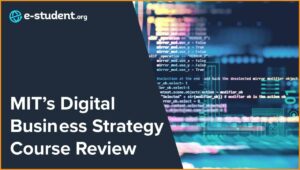Table of Contents
Data Security
When looking at LMS features, you’ll want to pay attention to how they handle data security. They should be regularly checking the code in the program, making sure that there are no weak spots for potential breaches, and sending updates to keep security standards high.
You’ll want to understand the ownership of you and your students’ data as well. Some providers make it a point to illustrate that you own the information, like Teachable and LearnWorlds, while others will be slightly less transparent.
This is important to understand — you’ll want to know if your students’ emails are being added to the vendor’s marketing email list, for example.
You’ll have to decide which system works best for you.
Check out the vendor’s website for more details on how they handle data security and ownership. Or, reach out to them and ask how they handle it, and dive into their standard terms and conditions.
High Server Uptime
One of the most significant benefits of using LMS platforms is that it gives students’ the option to learn on their own time and at their own pace. Plus, if your employees have limited time to access their training resources, you want to make sure the system is available to them 24/7.
Nothing is more frustrating than sitting down to take a course in your precious free time, just to find out the site isn’t working, you can’t access your training courses, and you’ll have to “come back later.”
This can be caused by various reasons — like site maintenance or a temporary server issue — but when choosing your LMS, you’ll want to ensure that these “downtimes” happen few and far between.
You want to give your learners the most reliable access to your material.
Software review sites like G2 and Capterra are great places to get an understanding of how reliable these platforms are. You can also check out industry message boards to chat with current and former customers, to get their feedback.
SCORM and xAPI Compliance
This is another fundamental technical aspect of any LMS software — the system should be coded with SCORM and xAPI compliance. These are the standards that all eLearning and course hosting software development uses.
It ensures that any LMS supports and “plays well” with other software used in virtual learning environments if programmed to these standards.
For example, a collegiate institution will house student data in a software called a Student Information System (SIS). You then need an LMS that works with that SIS.
If they aren’t compatible, this creates a need for mountainous amounts of data entry, duplicating the SIS information into the LMS.
As students work through courses — you guessed it — you’ll have to move data back.
With these programming standards in place, you’ll be able to save tons of time on data entry and stay focused on your students’ and your desired learning outcomes.
Intuitive User Interface
All major software systems aim to make their user experience smooth and intuitive.
As internet access became more widespread, developers started creating more user-friendly software and responsive interfaces.
While an LMS doesn’t need all the bells and whistles available, the features will most likely determine how much your learners enjoy their experience and how easy and intuitive the LMS is to use.
Navigation should make sense, and your users shouldn’t be confused when they try to access their courses. Using gamification or a personalized learning path should be easy for your students.
It should also be easy for your instructors to create eLearning content and each training course. While some training activities help familiarize users with the new system, it shouldn’t require extensive training courses to learn how to create courses with the LMS platform.
The more user-friendly the platform, the more likely your users are to adopt it fully.
Multiplatform Accessibility
With mobile-learning growing steadily and increasing 23% annually, many LMS vendors are moving to mobile-first program development. At the very least, they’re making sure their platforms are accessible on many mobile devices.
Personal mobile devices can be the primary way people have internet access. Without mobile-friendly development, LMS platforms are less accessible for the majority of users.
Most people prefer to have “on-the-go” access to their training materials, and you should offer it.
Suppose the experience diminishes when your students move to mobile devices, or access to some learning resources is limited. In that case, it’s not going to be a comprehensive, user-friendly platform, and your usage will go down.
Built-in Task Automation
Grading assignments, attendance at virtual lectures, and blocking outside websites during examinations are all eLearning specific automation that should be built into your LMS.
These are the features that promote a focus on learning and reduce stress from administrative work.
Without these LMS features, your software will function, but it won’t make eLearning easier. There are numerous challenges to online learning, but increased administrative time shouldn’t be one of them.
The power of the LMS is in small, meaningfully helpful features like this.
Your learning management system can help reduce task overload and headaches.
Social Learning Tools
Learning is a social activity.
In-person learning has its challenges, but it effortlessly creates a social environment. When developing your virtual learning environment, you should make sure the new LMS you choose facilitates collaborative learning programs.
It might be a forum where students can post questions and interact with each other. Maybe it’s a common location to collect helpful resources. Or a “chat” feature to help students get access to their instructor.
Once you understand what social learning tools look like for your organization, you can ensure that your LMS facilitates it.
You can even simplify course creation and collaboration for instructors — the LMS allows them to share popular subject material, challenges they’re experiencing, and successful teaching methods.
Useful LMS features supporting interactive learning are vital to your organization’s eLearning success.
Customizable Reporting and Analytics
An important LMS feature is the data it collects and stores. You should use this information to make data-informed decisions and increase your learners’ outcomes.
With your LMS reports, you can get detailed usage information, pass rates, connect it to increased revenue… the list goes on.
If you are responsible for tracking your employees’ access rate, it should be easy to get that information. Some systems haven’t developed these reporting tools, and it can be very complicated to get meaningful data.
This data can, in turn, be used to inform the learning paths and training content you distribute.
For example, if a specific question is continually answered incorrectly, you can see a gap between the instruction and the examination. It can even be used to inform personalized learning paths.
One of the biggest benefits of eLearning is the use of student data analytics to inform instruction. Make sure your new LMS allows you access to this advantage.
Video Conferencing Integration
As learning moves online, video conferencing allows instructors and students to have virtual learning opportunities that parallel an in-person classroom experience. It creates a live eLearning environment for lectures, discussions, or office hours.
Some LMS solutions have their own live video conferencing systems built-in. They connect students and instructors and provide the platform for these interactive learning sessions.
Others will have an open API that allows the top of the line video conferencing tools to blend seamlessly with the system. With a system that “plays well” with outside tools, your LMS lets you choose which software best fits your needs.
Gamification Tools
Popular LMS vendors are adding the most innovative educational methods to their systems. Incorporating these features into your LMS will help you achieve more significant learner outcomes, increased knowledge retention, and higher usage rates.One of the most engaging learning methods is gamification.
Research shows features like gamification in an LMS creates higher learner engagement and better student outcomes, as mentioned by Kiryakova, Angelova, and Yordanova/ In their study, they said that LMS are suitable for gamification as they have automatic tracking, individualized reporting of student progress, and active discussion boards.
Gamification is a very powerful tool that should not be underestimated.
Course Content Libraries
Online learning is growing and evolving, and using data to understand the most effective ways to teach the material is growing, too. Thus, some learning management systems feature content libraries of tested, powerful teaching content designed by subject matter experts.
Not all subjects or materials are covered in these libraries, but common subjects and compliance training material is often included. Because of these resources, instructors can create powerful eLearning courses without needing to reinvent the wheel.
If you are looking to use an LMS for a new industry or innovative subject, the library might be sparse.
However, if you’re looking to standardize common subjects, like anti-harassment training programs or customer-service for the hospitality industry, this is an LMS feature you’ll need.



